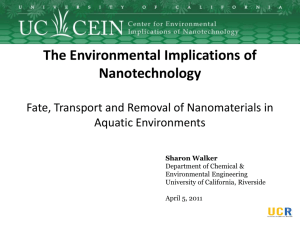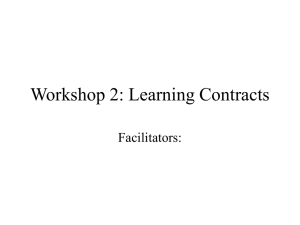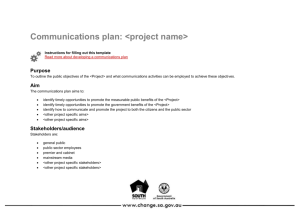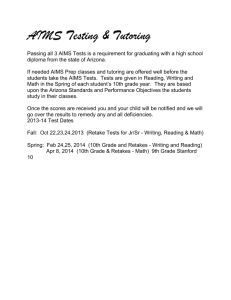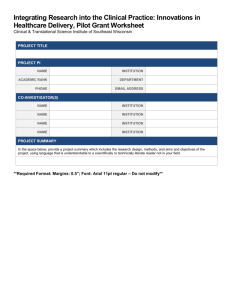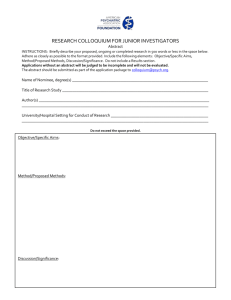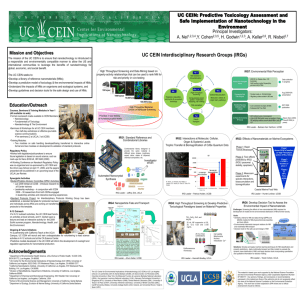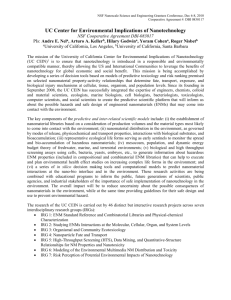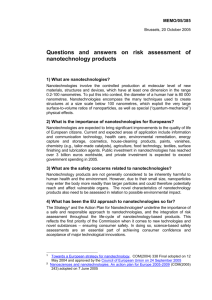Sociological Aspects of Engineered NanoMaterial Environmental
advertisement
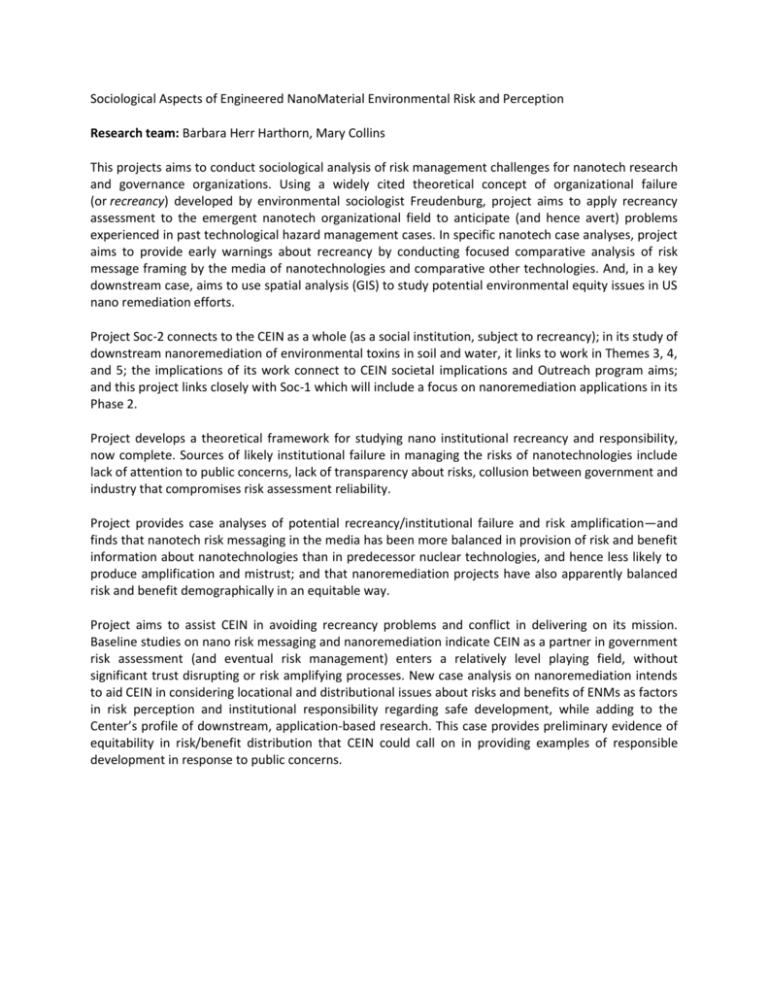
Sociological Aspects of Engineered NanoMaterial Environmental Risk and Perception Research team: Barbara Herr Harthorn, Mary Collins This projects aims to conduct sociological analysis of risk management challenges for nanotech research and governance organizations. Using a widely cited theoretical concept of organizational failure (or recreancy) developed by environmental sociologist Freudenburg, project aims to apply recreancy assessment to the emergent nanotech organizational field to anticipate (and hence avert) problems experienced in past technological hazard management cases. In specific nanotech case analyses, project aims to provide early warnings about recreancy by conducting focused comparative analysis of risk message framing by the media of nanotechnologies and comparative other technologies. And, in a key downstream case, aims to use spatial analysis (GIS) to study potential environmental equity issues in US nano remediation efforts. Project Soc-2 connects to the CEIN as a whole (as a social institution, subject to recreancy); in its study of downstream nanoremediation of environmental toxins in soil and water, it links to work in Themes 3, 4, and 5; the implications of its work connect to CEIN societal implications and Outreach program aims; and this project links closely with Soc-1 which will include a focus on nanoremediation applications in its Phase 2. Project develops a theoretical framework for studying nano institutional recreancy and responsibility, now complete. Sources of likely institutional failure in managing the risks of nanotechnologies include lack of attention to public concerns, lack of transparency about risks, collusion between government and industry that compromises risk assessment reliability. Project provides case analyses of potential recreancy/institutional failure and risk amplification—and finds that nanotech risk messaging in the media has been more balanced in provision of risk and benefit information about nanotechnologies than in predecessor nuclear technologies, and hence less likely to produce amplification and mistrust; and that nanoremediation projects have also apparently balanced risk and benefit demographically in an equitable way. Project aims to assist CEIN in avoiding recreancy problems and conflict in delivering on its mission. Baseline studies on nano risk messaging and nanoremediation indicate CEIN as a partner in government risk assessment (and eventual risk management) enters a relatively level playing field, without significant trust disrupting or risk amplifying processes. New case analysis on nanoremediation intends to aid CEIN in considering locational and distributional issues about risks and benefits of ENMs as factors in risk perception and institutional responsibility regarding safe development, while adding to the Center’s profile of downstream, application-based research. This case provides preliminary evidence of equitability in risk/benefit distribution that CEIN could call on in providing examples of responsible development in response to public concerns.

